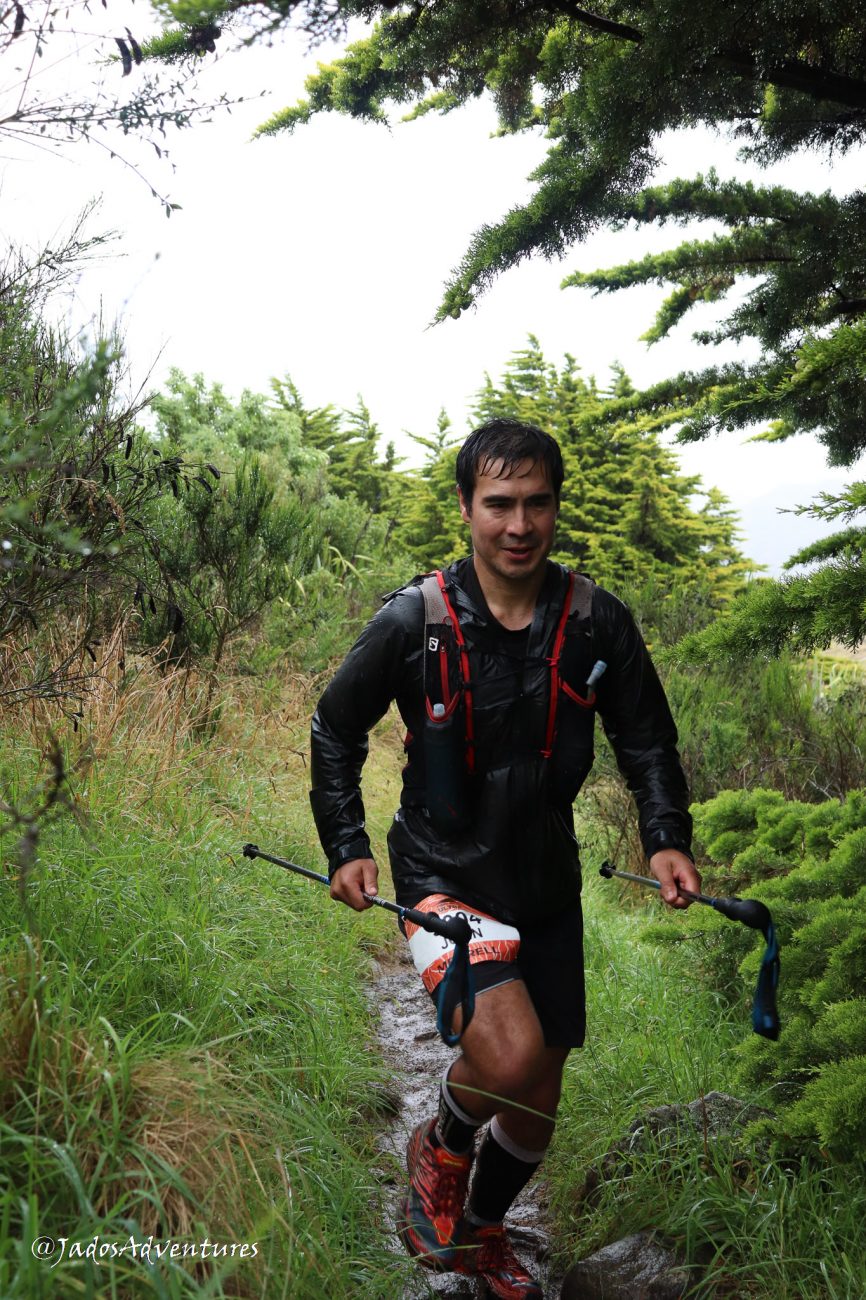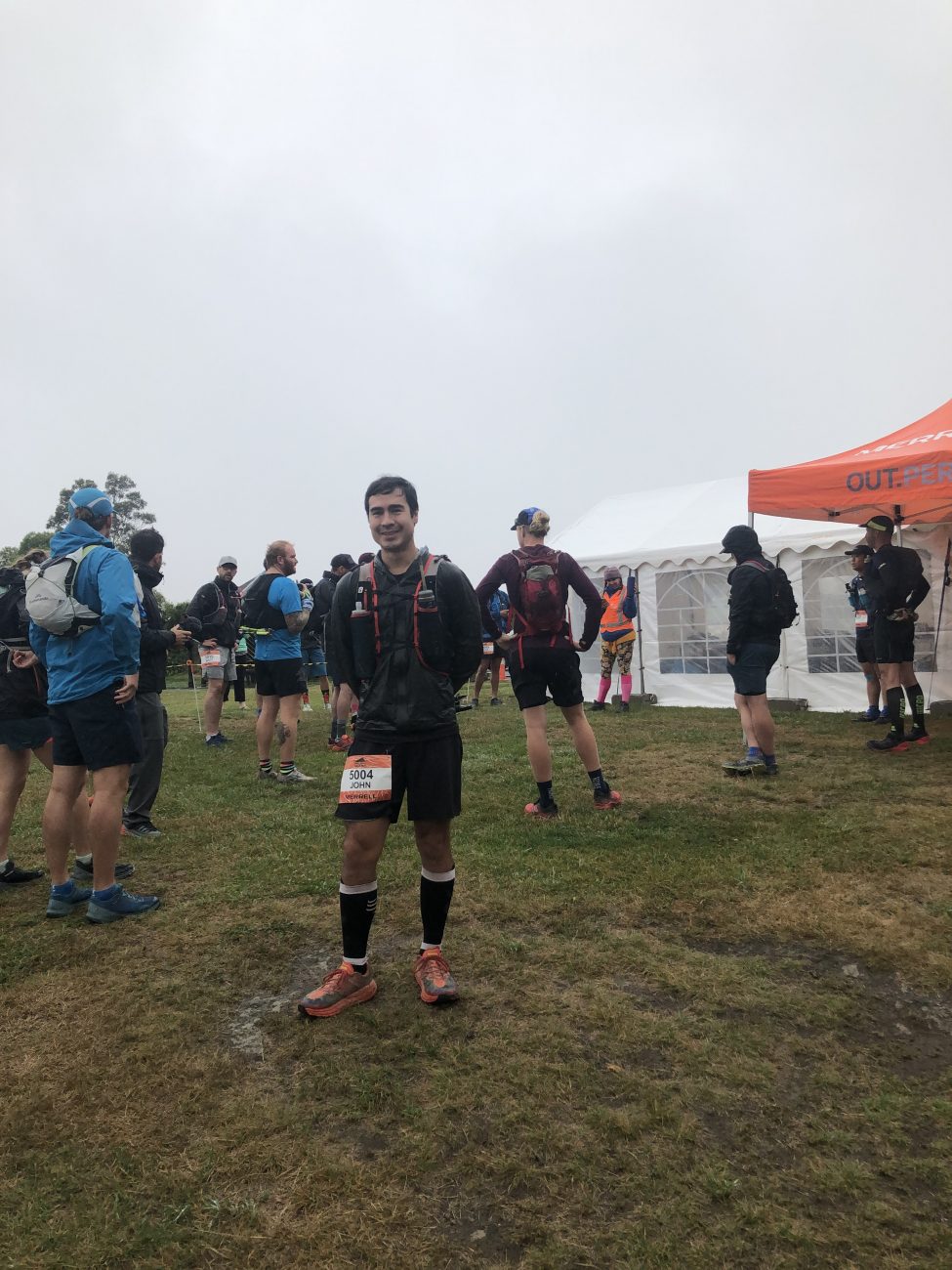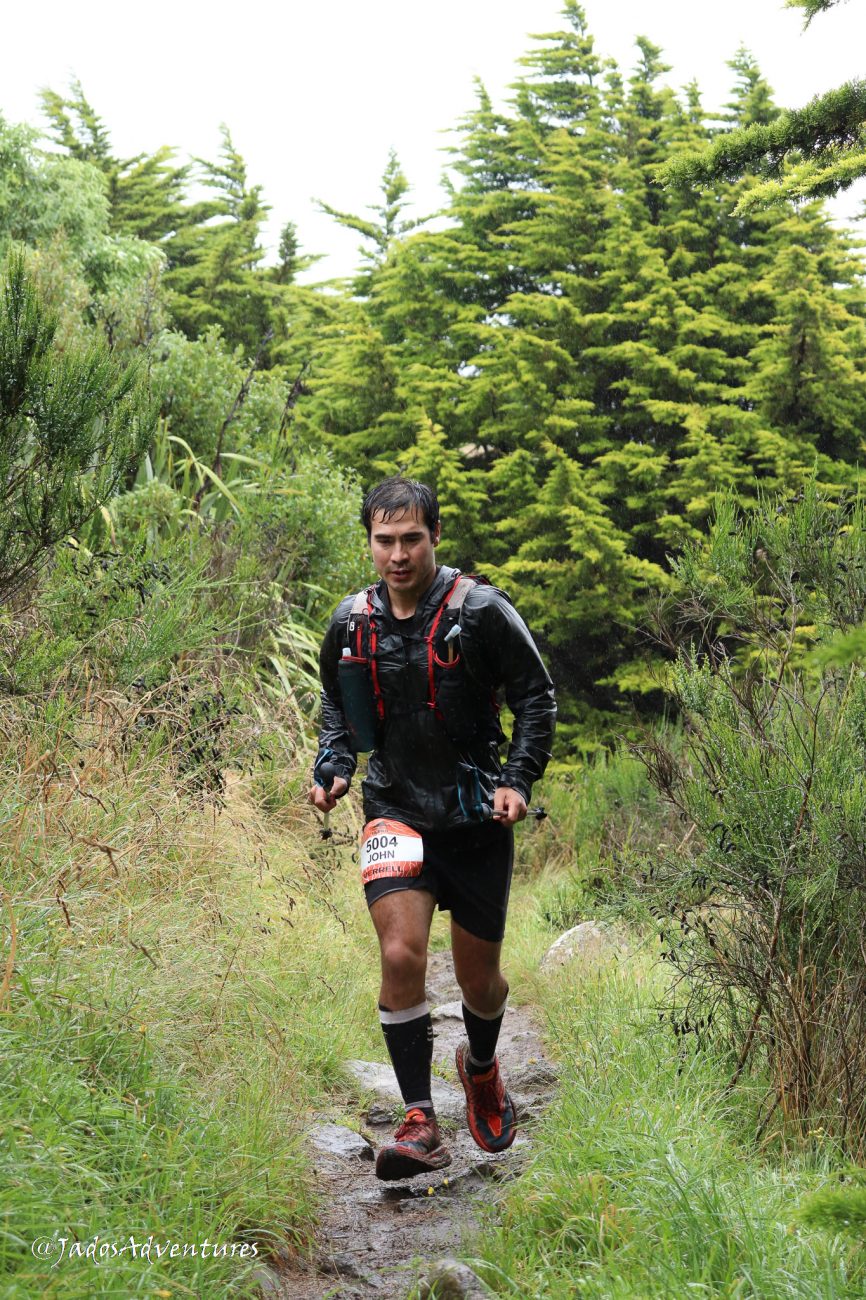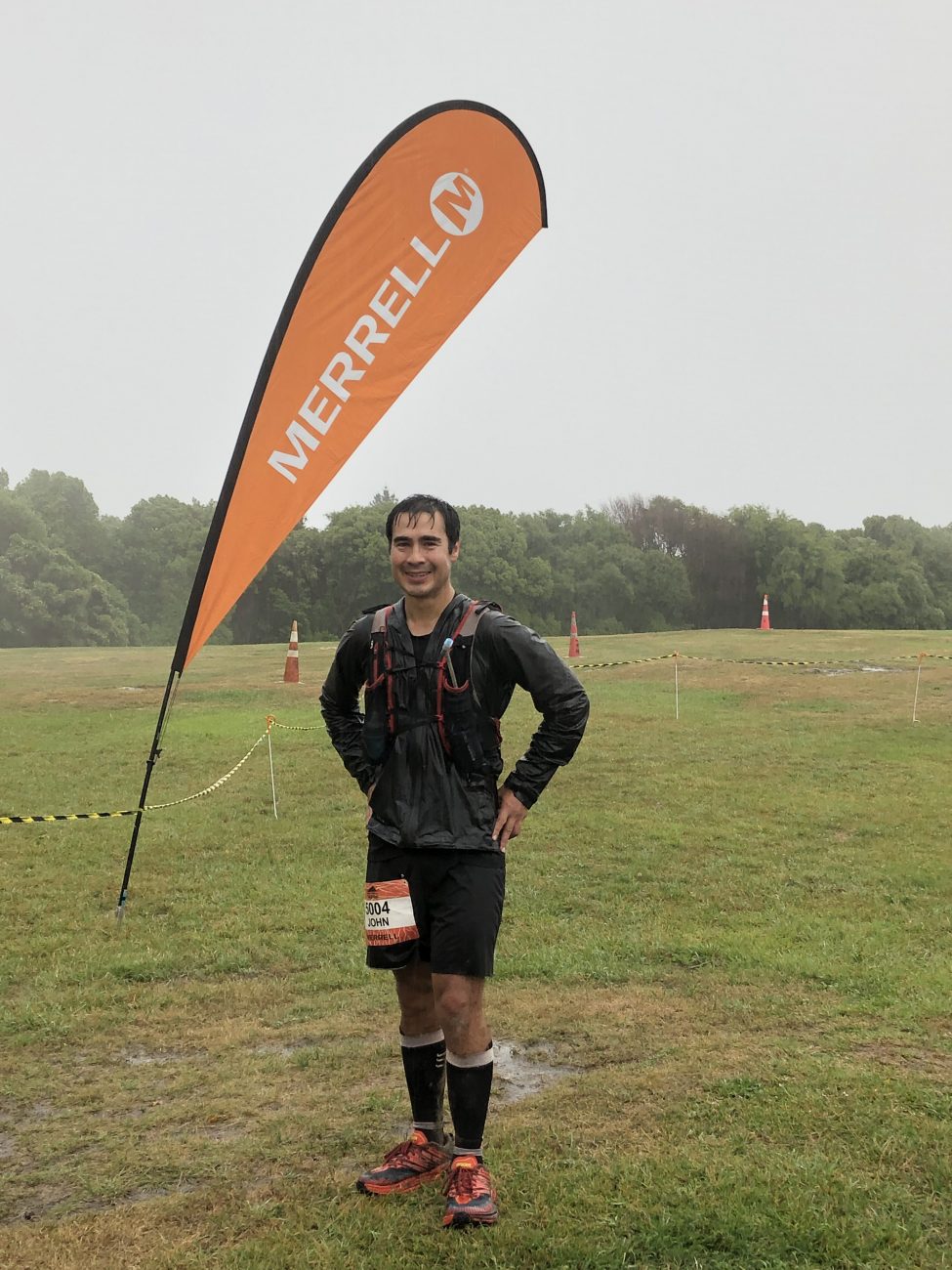
Port Hills Ultra 50km 2022
Date:
February 05, 2022I thought I’d give the Port Hills Ultra (50km) another go this year. Fifty kilometres is a good testing distance without having to deal with the excessive post recovery fatigue that accompanies a 100km distance. Being a home town run and with a leisurely start time of 9am, I was a bit too relaxed with my preparation. Usually before an ultra, I prepare the night before. However, somehow, I’d managed to subconsciously convince myself that this was only a training run so I lacked urgency. So when I’m still lying-in bed at 7.15am, I get a friendly reminder from my wife to get my A into G. By the time I’d finished the morning dogs’ routine, child distractions, and attended to my bustling caterpillar/monarch butterfly society (the latter is taking a lot of my time of late), I was left with 30 mins to eat, toilet, prepare race day nutrition/hydration, pack compulsory gear, and get the hell out of here! With a couple of minutes remaining, I had to choose between lubricating or brushing my teeth. Lube. Definitely lube! The weather forecast was for rain and rain equals chafing. Next thing you know, I’m lubricating like a man possessed covering every nook and cranny. I fly out the door negotiating the puddles around my car whilst sheltering from the rain. My wife shouts out sarcastically “Have a great day!” My 6-year-old, Millie complements this with “Have a poo poo day dad”. Jeez, I really hope that only one of them is right. As I leave the house, I’ve got less than 30 minutes to drive across the city and get to Victoria Park in the Port Hills. This is tight. Driving with intent and purpose, I manage to get to the start line with 3 minutes to spare. There is a quick countdown from 5 and then we’re off. About 30 runners spill over the start line and into the rain. Phew! I catch my breath. After all the hustle and bustle of the morning, I can finally relax and ease into this. “Don’t forget to have fun out there today” a lovely volunteer reminds us. It’s only raining lightly at the moment. I smile. “You too!”

Just enough time for a photo at the start line
After talking about running in the heat in my last blog. It makes sense to talk about running in the wet which is typically followed by running in the wet AND cold. The first priority is adequate lubrication to prevent chafing. Lubrication should be applied liberally and without fear of judgement. If one is applying lubrication in the presence of non-runners, it should be applied matter of factly and with an expressionless face. The perineum, inner thighs, arms pits, feet, and nipples (plus other protuberances of concern) are the main areas. Maybe your first webspace (area between your thumb and index finger) if you’re just starting with trekking poles. I rate Gurney Goo as it works really well and doesn’t ruin your clothes. The next thing is good wet weather gear. A good sock and shoe combination is paramount. Any feet issues you have in dry weather will be amplified in the wet. Good running clothing is also a must and although expensive, you won’t regret purchasing a light, waterproof, windproof, breathable jacket (e.g. GORE-TEX). Before your race, it pays to check the weather forecast. If forecast rain is fleeting or clearing, you may get away with not wearing your jacket. But if rain is forecast to stay, best to put on your jacket before you get soaked (rather than after) to help maintain your core temperature. The reason being is that it’s so much harder to warm up when you’re already cold! This is especially true later in a race as fatigue sets in and muscle activity slows meaning your ability to produce heat decreases. Your ability to go faster (and hence generate heat) is also reliant on the terrain. Terrain dictates pace. Though this may not be an issue in a road marathon, good luck trying to maintain 5km/hr going through puddles and muddy/slippery trail! Exercising humans have more effective physiological mechanisms for cooling (i.e. sweating) rather than conserving heat. Our physiological heat conserving mechanisms are limited to: Directing blood towards the core and away from our peripheries (hence cold hands and poor dexterity), increasing our metabolic rate (ever wondered why you’re inclined to move more / jog on the spot when you’re cold?), and finally shivering. Hence, we cannot rely purely on our physiological mechanisms to keep warm and must also utilise our cognitive responses and ability to make good decisions e.g. putting on more clothing, seeking shelter etc. (On a side note, ultra runners who gather in large groups aren’t renowned for their cognitive processing abilities). The other reason keeping warm is important is that cold muscle contracts with less force. The nervous system responds by altering normal muscle fibre recruitment patterns which has been suggested to decrease muscle efficiency and power. Hence, as you get colder, running may appear harder as you start to run differently and deviate away from your ‘normal/efficient’ gait (if the wet trail hasn’t altered your gait already). Finally, what’s the role of hydration and nutrition in the wet and cold? Drinking according to thirst is more reliable in wet/cold conditions and you’ll generally find yourself drinking less compared to hot conditions. However, your energy requirements will probably be greater as you’re running efficiency may be compromised and you’ll be out on the course longer due to the conditions. You’ll need your glucose/carbohydrates not only to replenish your muscle glycogen, but also to fuel your brain. Your brain will be in overdrive as you’ll be concentrating so much harder to prevent yourself from falling head over heels in the wet and mud. At any time during a race you get to a point of prolonged shivering, then you’re really courting a DNF as you’re now churning through your muscle glycogen to keep you warm (rather than using it to get you to the finish line). So in short, you may get away with carrying less fluid in the cold, but don’t skimp on your energy. Go with a carbohydrate/electrolyte drink and pack that extra chocolate bar!

Running along the Crater Rim Walkway heading towards Mt Vernon (photo courtesy of @jadosadventures)
Heading down towards Governors Bay, it’s getting pretty treacherous! The track is quite narrow and the rocks are wet. Although its only raining lightly, the lower half of my body is already drenched from the wet bush and thick grass. I pass a lady who’s struggling a bit going down a rocky and slippery switch back. “This is my worst nightmare” she proclaims. It always inspires me how ultra runners tend to seek adversity rather than shirk away from it. How many people nowadays willingly expose themselves to ‘their worst nightmare’? The majority of the tracks in this part of the course are rarely ventured (Faulkners, Watlings, Bush Rd, O’Farrell’s, and Cass Ridge Track) which makes for rugged going. The climb up Cass Ridge Track gets you back onto Summit Road and then you’re descending the Orongomai Trail deep into the lush greenery within Kennedys Bush. It’s during this section that I take my first major fall. Trying to avoid the slippery mud, I place all my weight on a large smooth rock when in an instant, I’m on my back staring up into the canopy. For a moment I lay on the ground in stunned silence. Usually when you fall, you’re at least afforded the dignity to shout or stick an arm or leg out. But seldom have I found myself belly up so quickly in complete silence. Despite the ferocity of the fall, I stand up relatively unscathed other than some minor bruising to my ego. Tail between by legs, I connect onto Holdsworth Track and eventually back onto the familiar Crater Rim Walkway again. By now I’m beginning to pick up a recurring pattern to this course. If you’re a Christchurch local you may appreciate the gravity of such a course. In summary: Go down towards Governors Bay and then back up to the Sign of the Bellbird. Head back towards the Sign of the Kiwi (via Kennedys Bush and Trig V Track) and then loop around Sugarloaf. From there, descend all the way down Latters Spur Track into Bowenvale Valley and then all the way back up to Summit Road via the Hidden Valley and Bowenvale Valley Walk tracks. Head towards Mt Vernon and then go up it (rather than around it). Descend down Farm and Gorge tracks all the way to the bottom, and then go back up the Mt Vernon Valley Track towards Mt Vernon again. Cross over Rapaki Track and go up Linda Woods Reserve through thick wet grass where there are no official tracks (I mean why would you want to utilise the perfectly formed Rapaki Track next to you when you can channel your inner goat and go straight up a hill face?). Run all the way out to the top of the Bridle Path. From there, you can finally turn around and head back home via Castle Rock and Bowenvale Traverse MTB tracks back onto Thomson Track and the more familiar Harry Ell Track. For non locals, the summary of the course is below: Go all the way to the bottom of the bay and then back up to the top. Run along the top for a bit. Go all the way to the bottom of a valley and then back up to the top. Run along the top for a bit but this time whilst you’re there, go up a mountain for good measure. Then go all the way to the bottom of another valley and then come back up again. Fluff around doing a few loops around the top and then head back home. This will give you a total distance of 50km with a total ascent of 2 900 m and a total descent of 2 900m (how’s that for Feng Shui?). Heading back towards the finish line at Victoria Park, the rain is really starting to pick up. By now the rain and sweat have merged into a thin glistening film and there’s the odd crunch in your mouth from the dirt that’s managed to find its way onto your water flask mouthpieces. Running’s getting a bit clunky and I dare not stop or risk stiffening up in the cold. Eight hours later, I cross the finish line. Soaked right through. Like a drowned rat minus the death and the misery. Happy. Running is medicine. Join me at my next blog. It’s a biggy. The Southern Lakes Ultra in Queenstown in late February. 300km over 7 days!

Wet but thankfully finished in one piece and injury free
